QLogic’s 8300 series is the company’s fourth generation of converged network adapters, offering 10Gb Ethernet and 16Gb Fibre Channel connectivity via single- and dual-port models with support for SFP+ direct attach copper cables and SR (short reach) optical transceivers. Administrators can utilize QLogic’s I/OFlex technology to convert 8300 series adapters between a 10Gb converged Ethernet and 16Gb Fibre Channel in the field. The 8300 series is able to offer CPU-offload capabilities for FCoE, iSCSI and TCP/IP traffic across a 10Gb Ethernet connection combined with the consistent, predictable performance and security of multi-port isolation which ensures that workload or error issues on one port do not affect the operation of the other port.
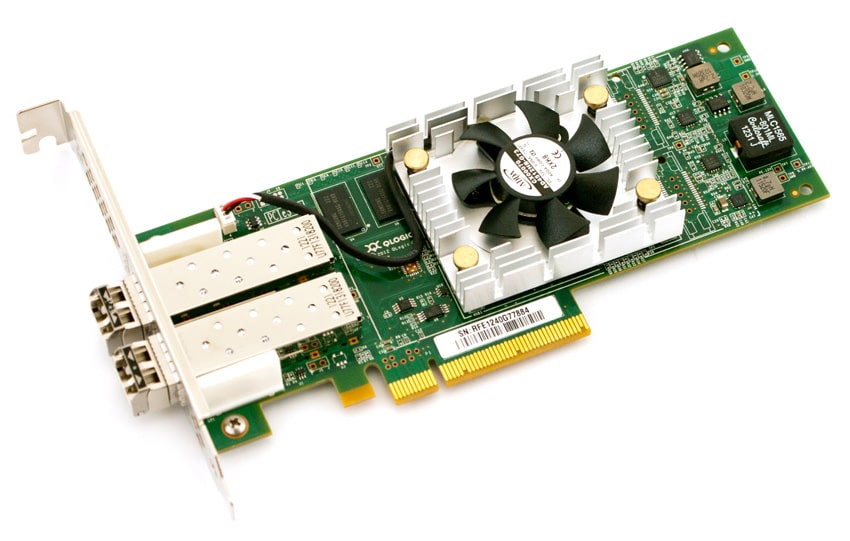
8300 series adapters use the same driver stack as QLogic’s 8100 and 8200 converged network adapters, providing a proven administrative experience as well as broad compatibility with server platforms, operating systems, and hypervisors. In the lab, we are using dual-port QLogic HBAs for SAN connectivity with Fusion’s ION Data Accelerator, which does not support competing LightPulse HBAs from Emulex.
Administrators of highly virtualized environments have strong incentives to increase virtual machine density as a means to lower operating expenses. Compared to its 8100 and 8200 series predecessors, the 8300 series adds support for the Single Root I/O Virtualization (SR-IOV) standard when used in NIC mode. It also supports QLogic’s proprietary switch-agnostic NIC partitioning (NPAR) and can utilize switch hardware within the adaptor to handle VM-to-VM switching internally for further decreases in host CPU utilization.
SR-IOV allows the adapter’s resources to be assigned directly to one or more virtual machines, and provides granular QoS to manage the partitions. The QLogic 8300’s SR-IOV implementation can establish up to 128 Virtual Functions per adapter for NIC traffic. NPAR is not an industry standard as with SR-IOV, but can currently be deployed with a wider variety of applications and host operating systems. NPAR presents eight PCI functions per device, with each function or partition assigned a unique MAC address. The 8300 supports concurrent processing of storage traffic via both FCoE (with NPIV support) and iSCSI, and NIC traffic using either SR-IOV or NPAR.
QLogic 8300 Specifications
- Models without transceivers, for use with copper cables:
- QLE8360-CU (single port)
- QLE8362-CU (dual port)
- Models with SR optical transceivers installed
- QLE8360-SR (single port)
- QLE8362-SR (dual port)
- Bus Interface: PCI Express Gen3 x4, Gen2 x8 (x8 physical connector)
- Host Interrupts: INTx and MSI-X
- I/O Virtualization: SR-IOV and NPAR
- Ethernet Throughput: 10Gbps full-duplex line rate per port
- Ethernet Frame: 1,500 bytes or 9,600 bytes (jumbo frame)
- Ethernet Stateless Offload:
- IP, TCP, and user datagram protocol (UDP) checksum offloads
- Large and giant send offload (LSO, GSO)
- Large receive offload (LRO)
- Receive side scaling (RSS)
- Interrupt coalescing
- VMware NetQueue and Microsoft VMQ
- FCoE Logins: Support for 2,048 concurrent logins and 2,048 active exchanges
- FCoE Port Virtualization: N_Port ID virtualization (NPIV)
- Management Tools and Device Utilities
- QConvergeConsole: a unified management tool (GUI and CLI) for Fibre Channel/FCoE, iSCSI, and networking
- Native OS management tools for networking
- Boot Support: PXE, FCoE, iSCSI boot
- APIs: SNIA HBA API V2, SMI-S
- Form Factor
- Low-profile PCIe card: (6.6 inches × 2.54 inches)
- Custom form factors
- 10Gbps Multi-Mode Optic Maximum Cable Distances
- OM1: 33m
- OM2: 82m
- OM3: 300m
- OM4: 550m
Design and Product Family
The QLogic 8300 series is available with SR optical transceivers and without transceivers, for use with SFP+ copper cables. Both configurations are available in single-port and dual-port variations. Each 8300 adaptor is offered as a low-profile PCIe card, with custom form factor options available from QLogic.
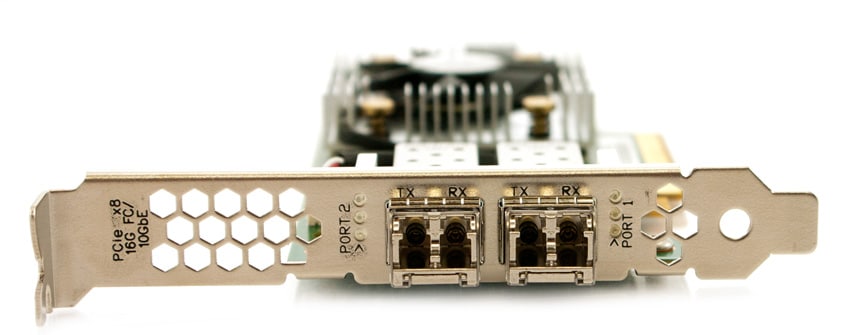
QLogic recently released a new unified management application, QConvergeConsole, which provides single pane management for multiple generations of QLogic storage and network adapters, including the 8300 series. QConvergeConsole includes a browser-based GUI, CLI, and a VMware vCenter plug-in which can query and modify driver parameters, monitor statistics, run diagnostics, troubleshoot, administer updates, provision bandwidth, change I/O personality, and assign access control.
Performance
We've had a chance to look at the QLogic 8300 CNA in action in multiple testing scenarios, including 16Gb FC mode as the target in our Fusion-io ION Accelerator review, as well as in 10GbE mode as initiator in our VMware testing infrastructure. In our ION Accelerator review with two dual-port cards acting as targets, we saw sequential throughput in excess of 5.8GB/s read and 4GB/s write.
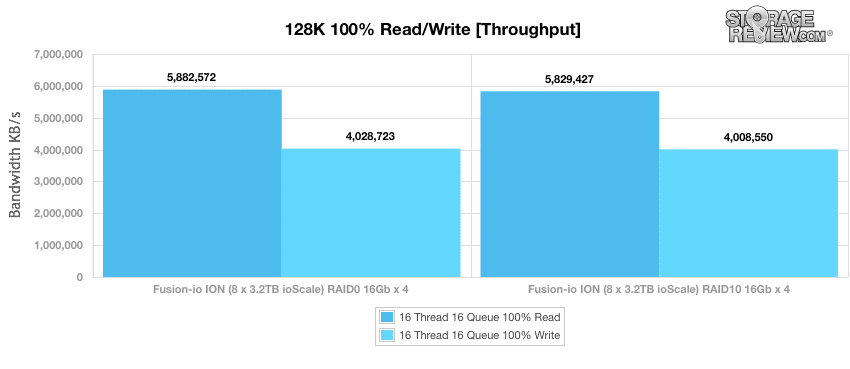
We also measured peak 4K random performance which topped at 301k IOPS read and 324k IOPS write to our ION configuration.
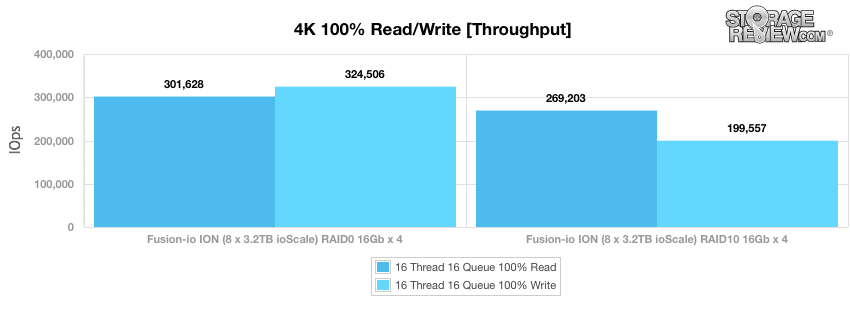
Switching over to 10GbE mode, we saw excellent performance in VMware, with the QLogic 8300 Series CNA stressing Aberdeen's N21L all-flash NAS, Synology's RackStation RS1061xs+ outfitted with all SSDs, as well as Dell EqualLogic's PS6100XS hybrid array.
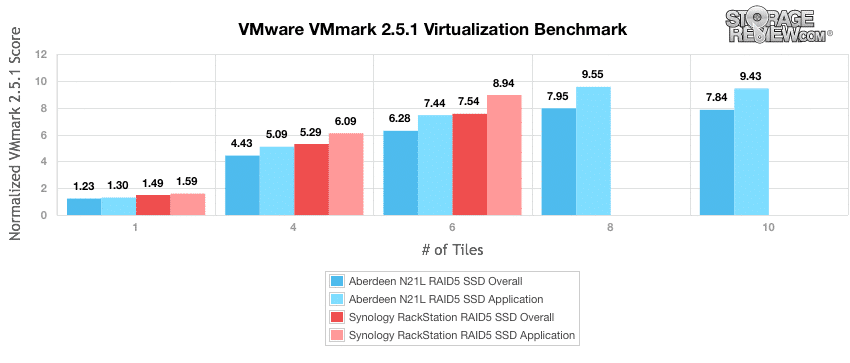
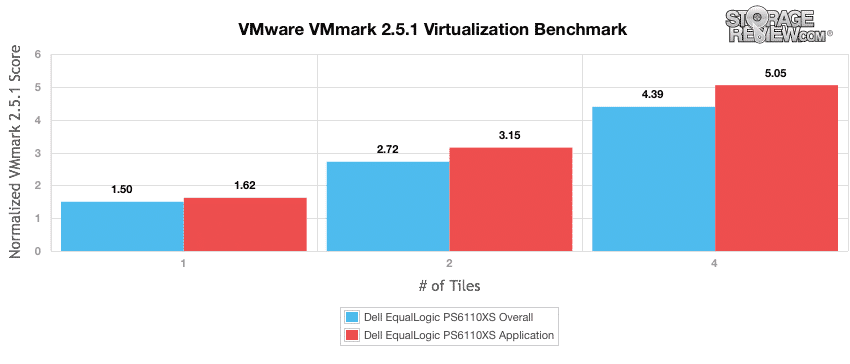
Conclusion
The QLogic 8300 adds new functionality and performance to a proven converged network platform, advances which are particularly useful in dense virtualized and multi-tenant environments. The 8300 series emphasizes flexibility with unique support for simultaneous TCP/IP traffic and SAN traffic when used as part of a 10Gb Ethernet solution, as well as support for straightforward field reconfiguration between 10GbE and 16Gb Fibre Channel.
Incorporating QLogic 8300 HBAs into the StorageReview Enterprise Lab allows us to take advantage of QLogic’s broad support by enterprise Fibre Channel SAN infrastructure while also providing leading-edge support for I/O virtualization and CPU offloads. We leverage the 8300 HBAs in our VMware testing infrastructure, using it for VMmark benchmarks against both 8/16Gb FC as well as 10GbE storage arrays.
Bottom Line
Support for both 10Gb Ethernet and 16Gb Fibre Channel connectivity matched with extensive I/O virtualization and offloading make the QLogic 8300 an impressive converged HBA.




 Amazon
Amazon